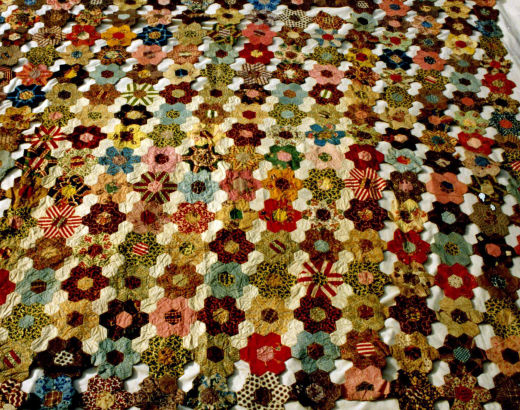Hexagons Rosette Fragment
Move your mouse cursor over the image to examine this quilt in detail.
- Maker:
- Unknown
- Date:
- 1830 - 1849
Hexagon rosettes fragment, made from various cotton prints dating from the 1830s - 1840s. Some of the rosettes are missing their joining hexagons. One hexagon contains a paper template with the hand written date of 1842.
Expert dye analysis by textile researchers on 9 different fabrics confirmed that they were all made between the 1830s and 40s. The blue dyes were made using Prussian blue whilst the different shades of yellow, ranging from very pale yellow to a strong yellow were made using a dye from Persian berries, a yellow mordant dye derived from Buckthorn berries. There are several shades of green in the patchwork, and green was a difficult colour to make from a single dye. The dark greens were made by printing yellow (Persian berries) over Prussian blue. The pale green was made from 'Scheele's Green', a copper arsenite pigment that was highly poisonous. There were also three different shades of pink fabrics tested; one pale, one strong pink/purple and one medium pink. All were made from cochineal, a red dye made from the crushed bodies of insects. The presence of this dye is unusual, as Cochineal is a difficult dye to use with cotton fibres.
190cm x 200cm
